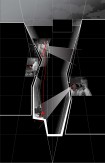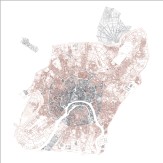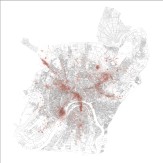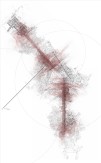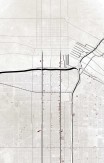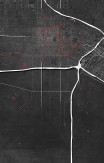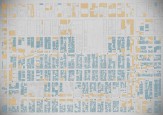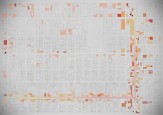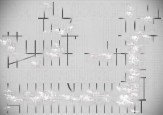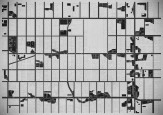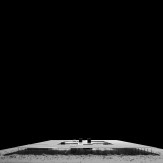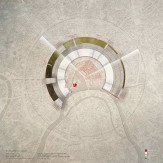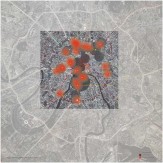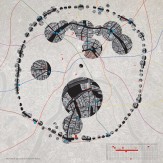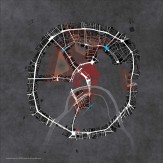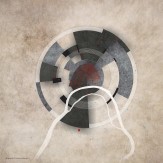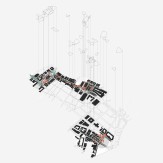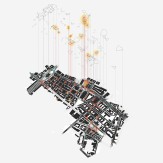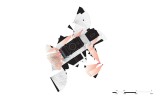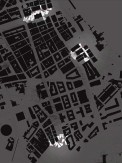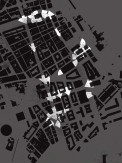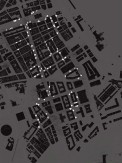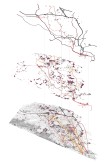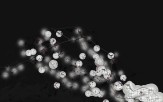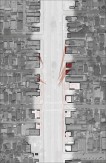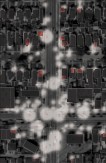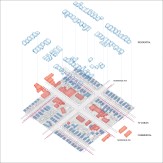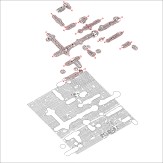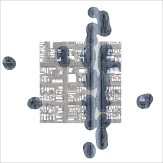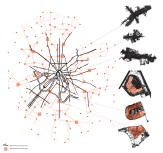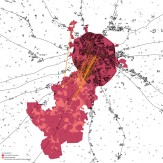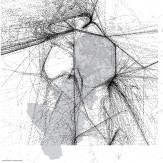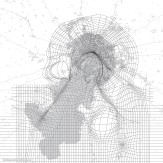Master of Architecture II Fall 2013

Projects
-
Chungking Express
-
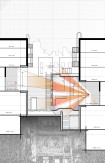
Rear Window
-
The Space of Media
-

October Revolution, 1917
-

Flammable City
-
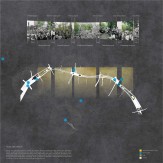
The Occupy Movements in Moscow
-
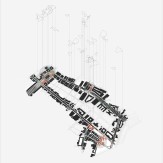
City of Walls
-

Boundaries: Physical and Beyond
-

Topography of Power
Back
Chungking Express
The film as a recorded light transforms the forms of the city. The screenshots indicate to changing forms of the city, which are generated by the use of the media of the film. Thus, the film creates masks of the city, hiding and simultaneously revealing its elements. The film, the recorded light, contains the forms of the city, which as a projection of light will be reconstructed on the surfaces it meets. According to the kind of surface the projection hits, the recorded forms can be transformed again. If instead of a wall, another projection of light meets the projection, the projection of light will be suspended in this space of the encounter. The encounter space is constructed as a series of screens of city forms generated from the screenshots, which are time layers. This encounter space reconstructs the recorded city forms revealing the essence of time and its relationship with the physicality and the content of the film.
Rear Window
Alfred Hitchcock generates a time and space that threads the movements of the story’s characters. This singular slice of the city becomes the backdrop for this spectacle to crystalize. Almost every character is swirling around the dwelling spaces except for one - L.B. Jeffries (Jeff). As a viewer we are tied to Jeff. Bound to this stationary vantage point we see no more or less than he does. It is the cognitive translation between the seen and unseen that makes the city a protagonist in Rear Window.
The set of drawings is a reading of the scene of the crime. There is an explicit act, which attracts all eyes to the space of the courtyard. The internal urban space is transformed by the sequence of the film. The courtyard flattens and all the characters appear to be on the same surface. This marks the first time that the courtyard dwellers interact with each other. We realize that this private courtyard is no more familiar than the public streets, which surround it. The flattened reading of the interior city block reveals an inverted urban phenomenon exposing that proximity does not produce familiarity.
The Space of Media
Bahar Avanoglu
Los Angeles may be reconstructed through the space of media that covered the 1992 city riots. The riots were broadcasted by helicopters, the movement of which was controlled by airspace regulations. These regulations determined the maximum and minimum altitude the helicopters were allowed to fly above ground level. The 1992 riots took place in various intersections, however most of the broadcasting channels broadcasted a limited number of intersections. Thus, one intersection got broadcasted by more than one channel.
The areas framed by different channels reveal the presence of a hidden layer of the city’s grid plan. Connected to the main roads in the grid, private pathways lead to parking lots in the backyards which created shortcuts during the riot, that sparked a different pattern of movement than the grid plan of the main arteries. The presence of helicopters—including their light and sound effect—over the city is a powerful and important presence in the experience of in Los Angeles.
October Revolution, 1917
Within the realm of the real, a unique genre of Russian and Soviet literature, the revolutionary novel, offers a telling and multi-faceted illustration of the 1917 Russian Revolution. While constructing a virtual catalog of the revolutionary events, three such novels are employed in order to inform the historical facts: The naked year by Boris Pilnyak (1922), The Badgers by Leonid Leonov (1924) and Doctor Zhivago by Boris Pasternak (1957). Several phases of the revolution emerge through them, facilitated in three distinctive urban spaces: the industrial, the governmental and the residential pole.
While tracing the path in motion, every event represents a time unit. Time, in this occasion, is articulated by spatial means: by points taken and territories overpowered. As the path threads its way from the outskirts of Moscow towards the Kremlin, it advances, retreats, stops or is halted, allowing for a temporal landscape of the events to be constructed. Reflecting the path’s thunderous accelerations, rendings, stopping points and gaps, it animates the urban fabric with its successive acts of becoming.
Flammable City
Hancheng Chen
“…Indeed, had alien voyeurs really been watching the earth from a secret observatory on the moon or suburbs on Mars, they would have been mesmerized by Los Angeles’s extraordinary combustibility. No other urban area on the planet so frequently produces large thermal anomalies…”
- Mike Davis, Ecology of Fear, 1999
This project focuses on the flammable level of the Los Angeles. Koreatown, the scene of 1992 riots, had the most complicated social, racial, economic issue, and had the highest density of alcohol among the Los Angeles City at the time. The streets functioned as fuses; liquor stores, grocery stores, bars, gas stations, and any building that housed a large amount of alcohol was equivalent to fire kindling. The Riots played the role of fire which was soon out of control spreading out over the whole city along the streets, igniting every flammable building and displacing frenzied citizens.
The Occupy Movements in Moscow
This project is about the relationship between the Occupy Movement areas and the local zones watched by the police in the downtown Moscow from 2011 to 2013. Furthermore, the project focuses on the issue of Occupy Abai that happened on the Boulevard Ring in 2012 in order to investigate the transformation of all the Occupy Movement areas from past to present during the past three years, and the range of future possibilities. Occupy Abai was not so much a protest movement as a stroll between parks on the Boulevard Ring. The reason why it’s named “Occupy Abai” is that the first speech for this movement was held beside the monument to the Kazakh poet Abai Kunanbayev on Chistoprudny Boulevard. Unlike other occupy movements in other countries, Occupy Abai was a legal and peaceful protest which lasted more than ten days.
City of Walls
Chihwei Hsu
This project focuses on the 2013 protest in Rio de Janeiro in relation to the power of surveillance in the city in understanding police control and citizenship, and further discuss the invisible social phenomenon which it reflects. The protest in June 17, 2013 was one of the biggest protests in downtown Rio de Janeiro. Initially people protested against increased bus fares. But soon the protest grew in scale and turned into a protest against the government in relation to its financial policy regarding the organization of the World Cup and the Olympic Games. This project focuses on the government mechanisms of control by reading the location of police, circulation and surveillance system in downtown Rio de Janeiro, and further discuss how the system works in the city.
Boundaries: Physical and Beyond
Meng Yang
The 1992 Los Angeles Riots, also known as the Rodney King Riots, which consisted of numerous lootings, assaults, arsons and murders, were induced by a widespread video and were eventually controlled by the deployment of the California Army National Guard with a dusk-to-dawn curfew.
Martin Luther King Jr.’s “A riot is the language of the unheard” implies a connection between the physical and the non-physical urban conditions. Using drawing as the main tool, this project aims to reveal these invisible relationships. Boundary condition is the main focus since it reveals the interactions between urban grid, building pattern, media, transportation and means of control.
Topography of Power
Yael Chen-Agmon
In the past two decades, following the dissolution of the Soviet Union, Moscow has experienced dramatic shifts in its structures of power, moving back and forth between remarkable extremes. The events of 1991 were the official light prism of the Russian social order: from Communism to Democracy, from nationalization to market-based economics, and from one spoken ideology to many opinions. But these shifts are not all in one direction; the Russian democracy in not really a democracy, renationalization or reverse privatization are common processes in this type of market-based economics, and the Russian centralized culture of authority is still dominant.
This project is looking at Moscow through processes of transformation and displacement, the relationships between political, military and economic powers, and how they shape the urban fabric.


